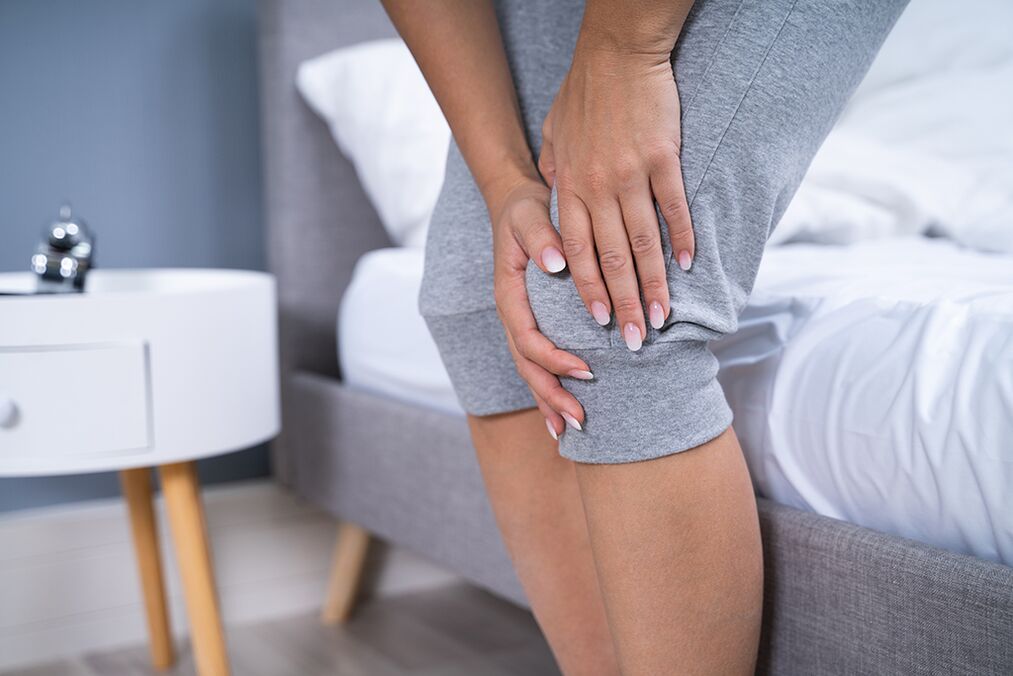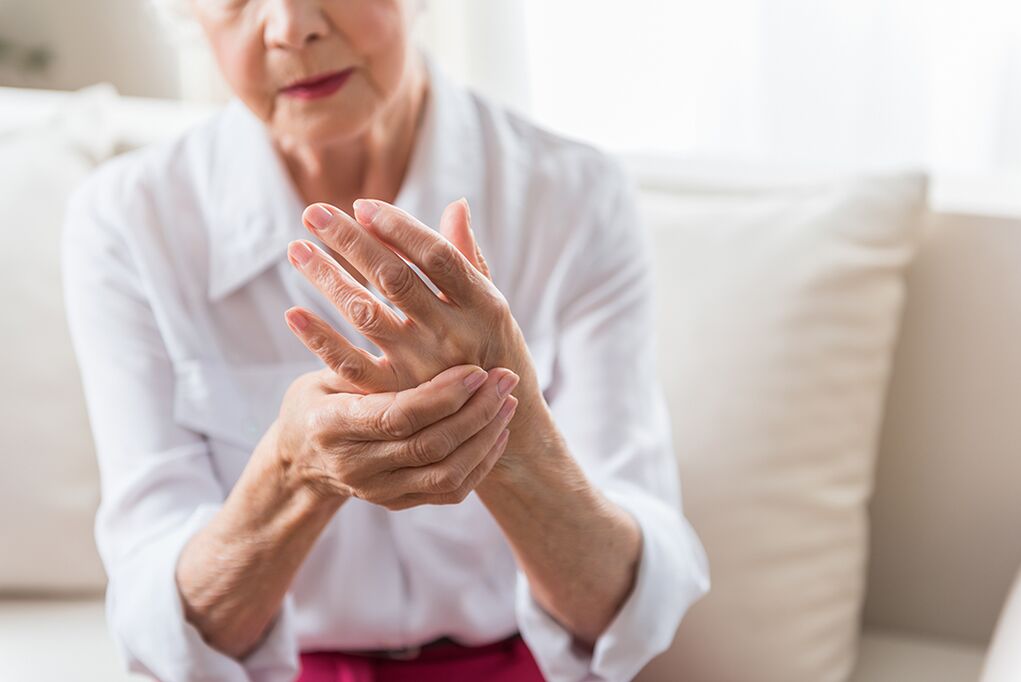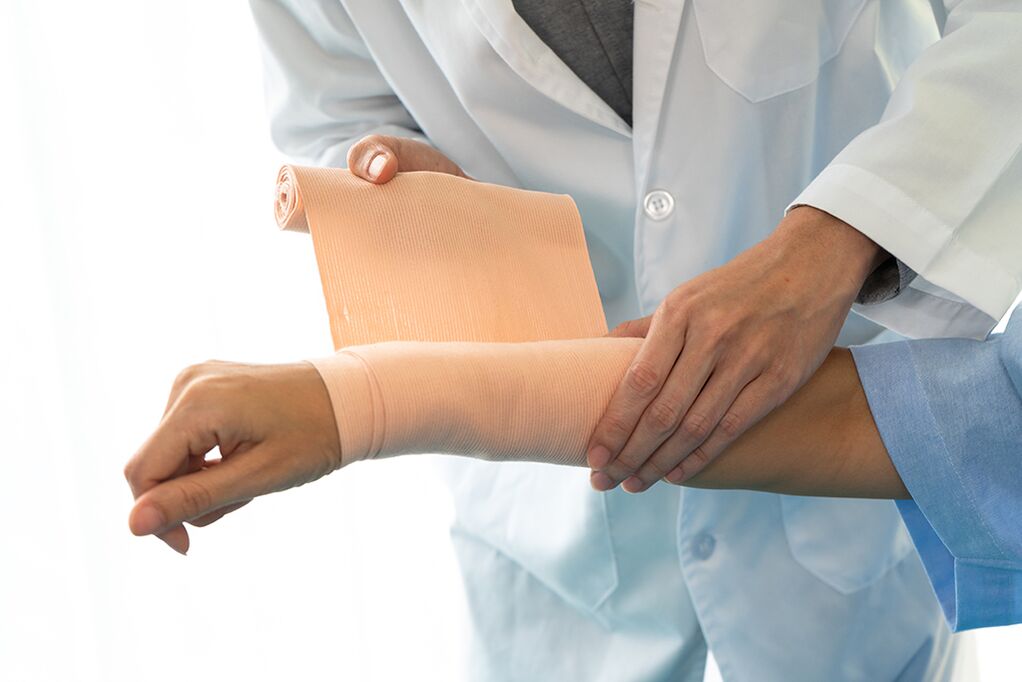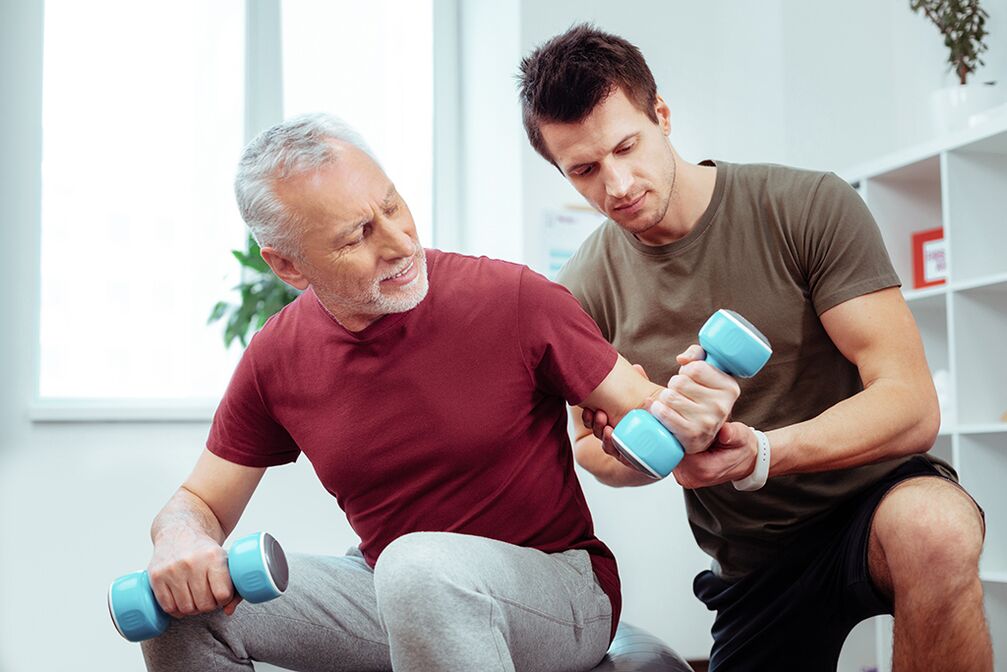Arthritis is a group of diseases caused by infection, improper metabolism, immune system disorders, in which an inflammatory process occurs in one or more joints. In this case, swelling, redness and a rise in temperature are observed in the affected area. The process can continue in acute or chronic form. In the first case, the patient has sharp pain in the knee or other joint, in the second case, the disease develops slowly due to inadequate treatment of the pathology in the acute stage. The most common types of arthritis are:
- osteoarthritis - damage to cartilage and adjacent bone and muscle fibers;
- Rheumatoid is a chronic autoimmune connective tissue disease that causes irreversible changes in the joints of the wrists, the wall flames of the hands and toes, and also leads to systemic damage to the body.
- dystrophic - degenerative destruction of joints caused by metabolic disorders, vitamin deficiency, hypothermia or physical overload;
- traumatic - an inflammatory process that occurs in the large joints (knees, elbows, shoulders) after injury;
- gout (gout) - a systemic disease caused by increased levels of uric acid in the blood and a violation of purine metabolism, is most common in men.

Causes of arthritis
All types of arthritis have their own causes, most often:
- transmitted viral, parasitic, urogenital, fungal diseases;
- the presence of foci of infection in the body in the form of phlegmon, abscesses, boils, tuberculosis, caries, and others;
- injuries that cause damage to the joints;
- excessive physical activity;
- allergy;
- hereditary predisposition;
- metabolic disease;
- unbalanced diet, insufficient amounts of vitamins and trace elements in foods;
- bad habits (smoking, drinking alcohol, taking illegal drugs);
- overweight.
symptoms of arthritis
The causes of the disease may vary, but there are a number of characteristic symptoms that occur in all patients. See a doctor if you experience:
- severe joint pain when moving or touching the skin in the joint area;
- stiffness of movements after waking up in the morning;
- swelling around the diseased joint, periarticular tissues and ligaments;
- local hyperaemia of the skin with fever;
- characteristic rupture of joints during sudden movements;
- feeling tired quickly during simple work;
- permanent deformity of the joints.
Important!If you ignore the first symptoms and do not start treating arthritis, the disease progresses and significantly reduces the patient’s quality of life. In this case, the process can become irreversible and lead to disability!

Stages of disease development
The clinical manifestations of the pathology are taken into account when determining the stage of the disease:
- First, there is a slight restriction on joint mobility, and the ability to self-serve and professional activities is retained.
- The second - the mobility of the joints is significantly limited, cracks appear when moving, and the pain in the legs increases when walking and at night.
- Third - deformation of the joints is noticeable, stiffness and severe pain are observed, the ability to work is partially lost.
- Fourth - deformity of joints and loss of mobility, cartilage is completely destroyed, severe pain creates a psycho-emotional burden, the patient loses the ability to self-serve.
Treatment methods
There is an orthopedic department at the specialist clinics where traumatologists orthopedists of the highest rating deal with the treatment of arthritis. The method of treatment is chosen by the doctor depending on the severity of the diagnosis. I and II of the disease. conservative treatment is carried out in the following stages:
- drug therapy, including intra-articular injections of hyaluronic acid and drugs;
- SVF therapy - treatment with cells from the stromal vascular fraction obtained from the patient's adipose tissue;
- PRP therapy is the treatment of joints, tendons and ligaments by injections of plasma obtained from the patient's blood and enriched with platelets.

In the acute period, periarticular blockade and anti-inflammatory therapy are administered. During remission, gymnastics and physiotherapy are prescribed. Indications for surgical treatment are indicated:
- corrective osteotomy of the bones of the lower leg, femur, knee joint to restore the axis of the lower limb;
- therapeutic and diagnostic arthroscopy (LDA), which involves cartilage surgery and microcracking to eliminate cartilage tissue defects.
A III. stage arthritis is treated surgically. The mobility of the hip joint is restored by arthroplasty (total, unipolar, bipolar). When the knee joint is replaced, a complete prosthesis is performed.
Prevention of arthritis
Follow your doctor's recommendations to prevent the disease from developing and to consolidate the results of your treatment:
- avoid high strain on the joints;
- perform physical exercises for stretching as well as joint gymnastics;
- organizing proper nutrition, eating more fish, fresh vegetables and fruits;
- take care of your weight, wear comfortable shoes, protect your joints from the cold;
- give up bad habits;
- perform regular preventive massage;
- strengthens immunity.
What is arthrosis
Osteoarthritis is a disease in which deformities and destruction of the cartilage tissue covering adjacent joint joints occur. As a result, the bone tissue inside the joint thickens, forming cavities and abnormal growths (osteophytes) on it. Gradually, the gap between the joints narrows and widens and they lose their mobility.
The disease most commonly develops in people aged 45 to 50 years and older. The most common form of pathology is deforming arthrosis, which affects the hip, knee and ankle joints, wrists and hands.

Causes of arthrosis
Important!The main cause of arthrosis is the difference between physical activity and the ability of the joint to withstand this load. Chronic acute arthrosis leads to joint deformity and destruction.
Possible causes of the pathology are:
- diseases of the endocrine system - diabetes, obesity, hyperthyroidism, excessive secretion of pituitary and parathyroid hormones;
- various injuries: fractures with displacement of the joint surfaces relative to the normal axis, contusions, dislocations, ruptures of the ligament;
- inflammatory processes in the body;
- metabolic disease;
- congenital pathologies - flat legs, limbs of different lengths, dysplasia;
- peripheral neuropathy due to diabetes or alcohol consumption;
- hypothermia and others.

Symptoms of arthrosis
The disease develops gradually, so signs of pathology appear after the destruction of the joints. Patients list the following as their main symptoms:
- cracking during movement;
- pain in the joint during strenuous physical exertion;
- increasing stiffness after waking up in the morning;
- deterioration of joint mobility;
- deformity of the fingers and toes due to bone outgrowths;
- aching pain under changing weather conditions and atmospheric pressure, and nocturnal pain.
Stages of arthrosis
In the absence of treatment, three stages of arthrosis are distinguished:
- Stage I - the mobility of the joints is slightly limited, the amount of nutrients in the joint fluid is reduced, and the load on the joint causes pain.
- II. stage - the mobility of the joints is significantly limited, the cartilage begins to break down, cracking and pain occur during movement.
- III. stage - destruction of the cartilage structure and deformation of the joint site, osteophytes are formed on the bone tissue, the joint practically loses its mobility, the pain syndrome becomes permanent.

Treatment methods
The goal of treating arthrosis is to eliminate the cause of the disease, alleviate the pain, and regenerate the cartilage to restore joint mobility..For this, the patient prescribes analgesics and anti-inflammatory agents. In the first and second stages, the following will also be implemented:
- injection therapy by introducing hyaluronic acid into the joint;
- SVF therapy based on the ability of the stromal vascular fraction of adipose tissue to stimulate the repair of an injured joint;
- PRP therapy by introducing drugs into the joint cavity that eliminate inflammation and reduce pain;
- periarticular blockade by introducing drugs into the periarticular tissues that restore joint mobility.
In case of prolonged pain, surgical treatment is performed:
- corrective osteotomy to repair dead joints (knees, hips, ankles, and others);
- therapeutic and diagnostic arthroscopy, including cartilage surgery and microcracking to eliminate cartilage defects.
During remission, physiotherapy, gymnastics and massage are recommended.
In the third stage of arthrosis, hip arthroplasty (total, bipolar, unipolar) and total knee replacement are performed.

Prevention of arthrosis
To prevent the development of arthrosis, experts recommend:
- avoid high strain on the joints;
- eat right, include foods containing collagen and omega-3 in your diet;
- do regular exercise exercises to stretch, if possible, visit the pool;
- do not overcool;
- wear comfortable shoes;
- refuse bad habits;
- control weight.
It is not possible to talk about which is more dangerous: arthritis or arthritis, because if left untreated, complete immobility of the joints occurs in both cases, which can result in destruction or disability. Therefore, it should be borne in mind that with clinical treatment, the patient can expect a favorable prognosis.

























